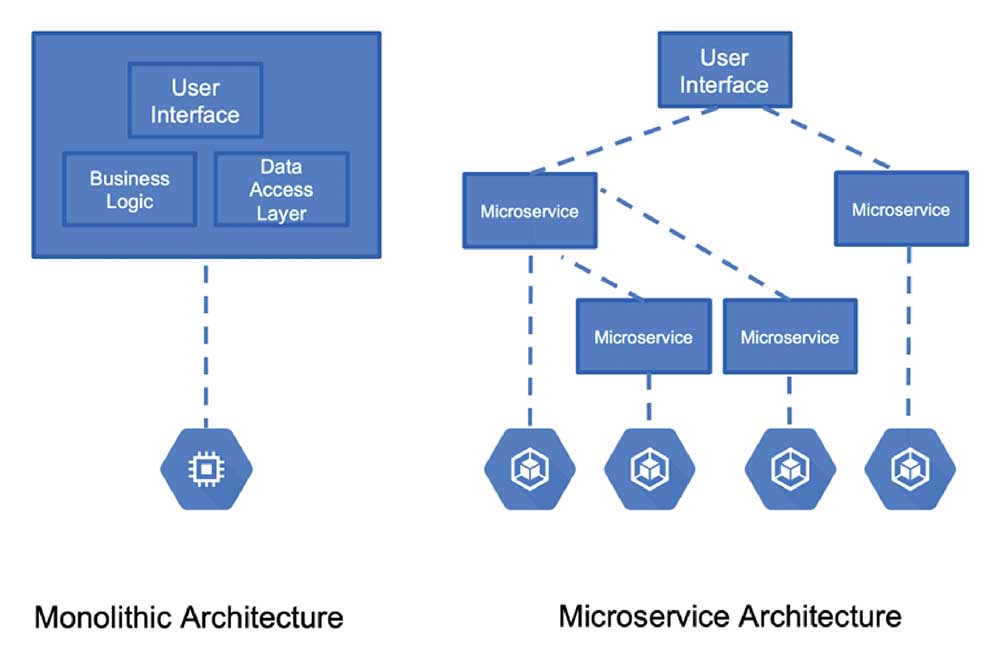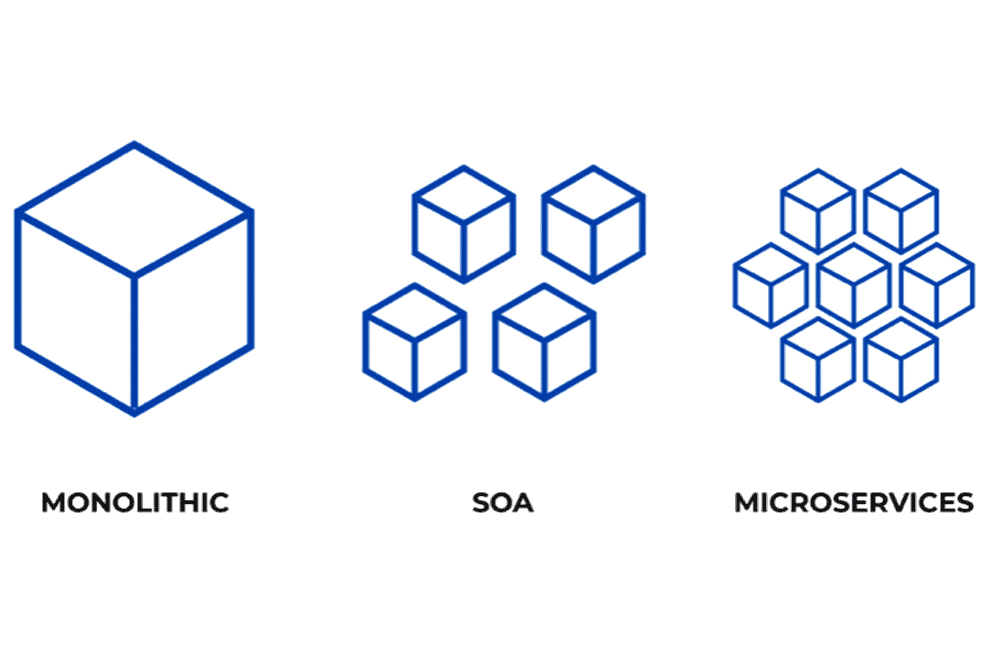
Microservices, which have replaced the monolithic architecture, mark the beginning of a new era in the development of cloud applications. In this article, we focus on the meaning of microservice architecture and what it is used for.

Software development processes have changed throughout history. From the emergence of the first computer software to this period when all business processes flowed almost through cloud platforms, scales have changed, new functions have been added to what applications can do. As such, when existing development processes were insufficient, developers adopted new methods, approaches, structures and architectures. Today, while we are at the center of our digital lives, our tolerance levels for interruptions in the applications we use are quite low. Architectural approaches such as microservice also shape development processes according to user needs, enabling seamless user experiences.
Today, as Global IT, we focus on microservices, which are also related to the concept of container (container), which software developers have been talking about the most recently. In the article where we will start by investigating the answer to the question “What is microservice architecture?”, we will try to mention what this architectural approach is used for, its difference with the monolithic approach, and what needs it responds to.
What is a microservice architecture?
A microservice architecture, also called microservices or microservices, is an architectural approach to building cloud applications. This approach essentially allows a large and complex application to be broken down into smaller independent parts, where each part has its own area of responsibility. A set of services is created in each application, these small independent services run in their own processes, and the services communicate with each other through APIs known as application programming interfaces. Microservice architecture, the foundations of which were laid before the concept of containers emerged and entered the modern era in web applications, stands out as a way to develop “best” applications over time.
Let’s give an example of the use of microservice architecture in e-commerce. Let our e-commerce platform consist of 6 modules: product search, product catalog, shopping cart, admin interface, payment and order evaluation. In a microservice architecture, all these modules operate as small, independent, and interconnected software packages. The development and deployment of each module can be carried out without affecting the overall functioning of the system.
After the general definition of microservice architecture, we can see more clearly where and how transformation takes place by focusing specifically on the features of monolithic architecture. Because it is necessary to take a look at the previous common approach to understand what microservice architecture brings today.

What is monolithic architecture?
Monolithic architecture is an approach to software development in which applications consist primarily of three layers: presentation, application/business logic, and database, and these layers are built as a single stack on a single, monolithic server in a data center. Monolithic architecture, which was previously common in every industry vertical and technology architecture, refers to a workflow that meets the user in the layer called presentation, performs queries to respond to user demands in the application/business logic layer, and records all these processes in the database.
When we thought of an application as a collection of code modules that generally served a specific function, users interacted with the frontend, forwarded their requests through the frontend, the requests transmitted through the front end turned into meaningful outputs in the application section, and all these operations were recorded in the database. But such a whole system produced vulnerabilities known as single points of failure, called SPoF (Single Point of Failure). A fault that could occur at any point in the system in question could not be repaired without human intervention, and in cases of hardware or code failure, it was accompanied by long-term interruptions. On the other hand, when the application began to be used by more people and more performance was needed, it was necessary to purchase a new server, re-establish a monolithic application structure running on a single server, and transfer some of the users to the new system in order to scale the structure. All of this has resulted in monolithic architecture not meeting the needs of modern applications that are more complex and need more agility.
One step further: Service-oriented architectures
The inadequacy of monolithic architecture led to the emergence in the mid-2000s of service-oriented architecture, which made it possible for various tiers to exist as independent service layers outside of a single server. This approach, abbreviated as SOA and known as service-oriented architecture in English, is the result of virtual servers (virtual machine | VM) coincided with its advent, and application deployment processes began to accelerate with the support of this approach and virtual servers. This approach, which allowed developers to scale services independently, also became the basis for the microservices architecture. The main goal of both approaches was to break down large application structures into smaller components.
Features of microservice architecture
Today, microservices architecture, which increases the flexibility in software and offers developers an agile intervention area, allows different parts of an application to work separately. All these small pieces of application converge into a general service, in one large application, and appear as if they were a monolithic structure in front of the end user. In this way, the fact that a process does not work completely does not adversely affect the whole system and the SPoF is eliminated. Microservice architecture makes it possible for systems to self-heal and fix code errors even without human intervention. Container orchestration tools, such as Kubernetes, can do this on their own. The microservices architecture enables applications at different scales to run in private clouds, data centers, or hybrid multicloud platforms. As applications are developed cloud-native, so that they can run in the cloud, accessibility to development processes increases.
What is microservice architecture used for?
Microservices architecture is often used to accelerate application development. Microservice architectures make life easier for developers, from website migration to playing media content, from payment tracking and order tracking to data processing.
For example, a website or application operating in a monolithic structure can be moved to a cloud-based and container-based microservice platform. Large media files, such as TV shows and movies, on the other hand, can be stored in a scalable storage system using a microservice architecture and served directly on the web or in mobile apps. If the billing infrastructure on your e-commerce site is not working, it would mean that these payment systems do not work when it is in a monolithic structure. Since the microservice architecture allows to separate different business processes, your e-commerce site can continue to receive payments even if the billing system does not work.
What are Google microservice solutions?
As the microservices architecture ranked by Gartner, a technology-driven research and consulting firm, among the 10 technology trends it believes are shaping infrastructure operations, is becoming the industry standard for developing and running applications in the cloud, Google Cloud provides solutions for easily deploying microservices. Deployment tools such as Google Kubernetes Engine, Cloud Run, and Cloud SQL and other Google Cloud products and services can be easily integrated to support microservice architectures.
As Global IT, we deliver Google’s microservice architecture solutions to businesses and provide the most suitable infrastructures for those who want to carry out their business processes digitally with the opportunities offered by microservice. Global IT, which is the oldest and only Google Cloud Partner in Turkey and has carried more than 700 companies to cloud platforms with its 15 years of experience, is the leader among container platforms according to Forrester, and we make the technologies that shape the future of the internet accessible to tens of thousands of end users.
